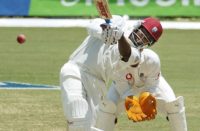Adam Collins looks at both sides of the argument in the ongoing pay row which is dividing cricket in Australia
Industrial disputes usually aren’t hard to understand. More often than not, they amount to a tussle between management and workers over wage increases. But the bitter scrap pitting Cricket Australia against the Australian Cricketers’ Association is harder to unpick than most.
At the simplest level, the deal that CA put on the table to cover the next five years shows pay going up, significantly, for all players. And more players than ever before, too, with women cut a formal piece of the big pie for the first time to vastly augment their remuneration.
The complication is the sanctity of the revenue sharing model put in place 20 years ago to secure the living standards of domestic male cricketers. A model that – from the Test captain down – players want to be retained, with management determined to scupper.
The public dialogue has been passionate to the point of nasty. Neither side is giving an inch, both believing they have the best interests of the game at heart. Yet, to say negotiations have stalled is an understatement.
With a June 30 deadline to sort it out for players to remain in the employ of Cricket Australia, signs point towards this getting worse before it gets better, with international representatives adamant they will not relent until their state colleagues’ demands are met.
With the Ashes now being brought into doubt as a result, by the day there are more questions than answers.
Firstly, what is the revenue sharing model?
In 1997, state cricketers were paid a pittance, resulting in a near strike from the national team in support. The compromise was an agreement where 20 per cent of all revenue received by the then-Australian Cricket Board would end up in players’ pockets – both national and state.
CA’s new offer ends this arrangement for domestic players. Instead, they stand to benefit from fixed contract increases – healthy ones at that – but are locked out of future CA windfalls.
How did this all kick-off to begin with?
With a new five-year Memorandum of Understanding due mid-year, posturing commenced last December. Then, trawling through a CA submission, the ACA identified that women would need to identify pregnancies when signing contracts for them to proceed. Eyebrows were raised and shots were fired between the parties.
In response, claiming good faith had been breached, CA suspended talks further until the new year. Then, when CA’s offer did hit ACA desks in March, they immediately deemed it unacceptable on the basis that the revenue sharing model had been scrapped.
After two months of simmering but elevated tensions, a letter from CA chief executive James Sutherland to the ACA last Friday said from June 30 there would be no short-term arrangements made to keep paying players until an MOU is resolved and deals signed. In essence, if they didn’t sign up, the players would stop getting paid.
If this was an effort from CA to force ACA’s hand, it didn’t work. Instead, the players were openly united, culminating in explosive comments from vice-captain David Warner pledging to do whatever it takes to retain revenue sharing for state cricketers. “We won’t buckle at all,” he said. “We are standing together.” Touch one, touch all.
What did the original offer actually say?
On the whole, the increase in total player payments stands at 36 per cent in CA’s offer over the five years. International stars continue to rake it in, Steve Smith earning in excess of $2 million, with all nationally contracted players taking home $1 million or more, while still benefiting from the revenue sharing bonuses in their arrangements.
Crucially, being cut in the deal for the first time, Southern Stars’ salaries set to immediately leap 125 per cent to an average of $180,000 a year, with female state players also having their pay doubled to $52,000 as the move to professionalism continues.
Domestic men, around whom the conflict surrounds, go from earning an average of $199,000 now to $235,000 across the life of the arrangement.
That sounds pretty good. What’s the issue?
It is, especially when considering that Sheffield Shield players were earning an eighth of that when strike action was mooted in 1997.
But the counter argument is they have earned the right to continue collecting a percentage of revenue on the basis that the Big Bash League goes from strength to strength. As Warner said, “these guys have built up the BBL” – not the internationals.
Notably, it has been Australia’s highest paid players most forcefully defending the status quo on behalf of their state teammates. Mitchell Starc has been especially feisty with Smith also putting his name to the ACA’s #fairshare twitter campaign.
Three-year deals were presented to the top echelon of the Australian side last week – a new innovation. But there was a catch. To get one, they had to forego the Indian Premier League. Warner, who captains an IPL club, called that idea “laughable”. It was a timely reminder how far there is to go for administrators to get their biggest stars on board.
Why the shift on revenue sharing to begin with?
CA say revenue sharing has achieved its purpose. That from it, state players are some of the highest paid sportspeople in Australia. But with their salaries locked in and increasing, they aren’t the priority in the same way they were a generation earlier. Instead, women and the grassroots game were the focus of additional money.
As to CA’s broader antipathy towards the ACA, the national body’s governance has been overhauled since the previous MOU five years ago with the board now recast with independent directors from commercial backgrounds as well as cricket.
From 2015, CA’s chairman has been David Peever. A former managing director of mining giant Rio Tinto, in that previous life he was a forceful opponent of third party bodies negotiating on behalf of employees. Namely, of organisations just like the ACA.
So what happens next?
Another development during the week was Peever writing to the ACA to decline external meditation requested by the ACA, refused because they don’t believe the players’ representatives have adequately engaged yet on their March proposal.
So an alternative route to the negotiating table needs to be found. With Sutherland’s aforementioned letter making clear players will be unemployed if there isn’t a deal by June 30, a breakthrough is urgently needed to prevent chaos.
Warner said that if national players are out of contract at that time, they will explore earning a living in the immediate term via the Caribbean Premier League and T20 Blast, in the absence of being able to tour Bangladesh in August for two scheduled Tests or India for ODIs in October. Messy.
Then… the Ashes?
The “extreme” case, according to Warner, is that CA “might not have a team” at Brisbane in November for the Ashes opener. Sure enough, this ended up driving back and front pages headlines and sharpening the scrutiny from the wider world.
Will concessions be made and cool heads prevail? It remains unclear. The episode plainly highlights how this side of the game has changed. So, no matter what happens next, don’t expect this to be the last time players flex their considerable muscle in ways unheard of until now.
This piece originally featured in The Cricket Paper, May 19 2017
Subscribe to the digital edition of The Cricket Paper here















